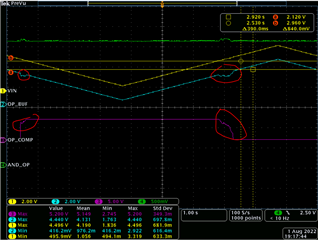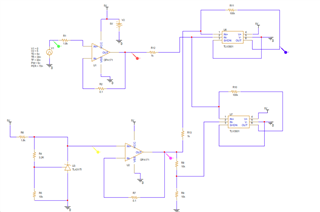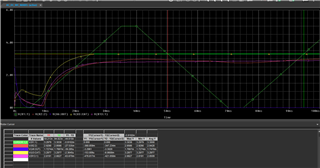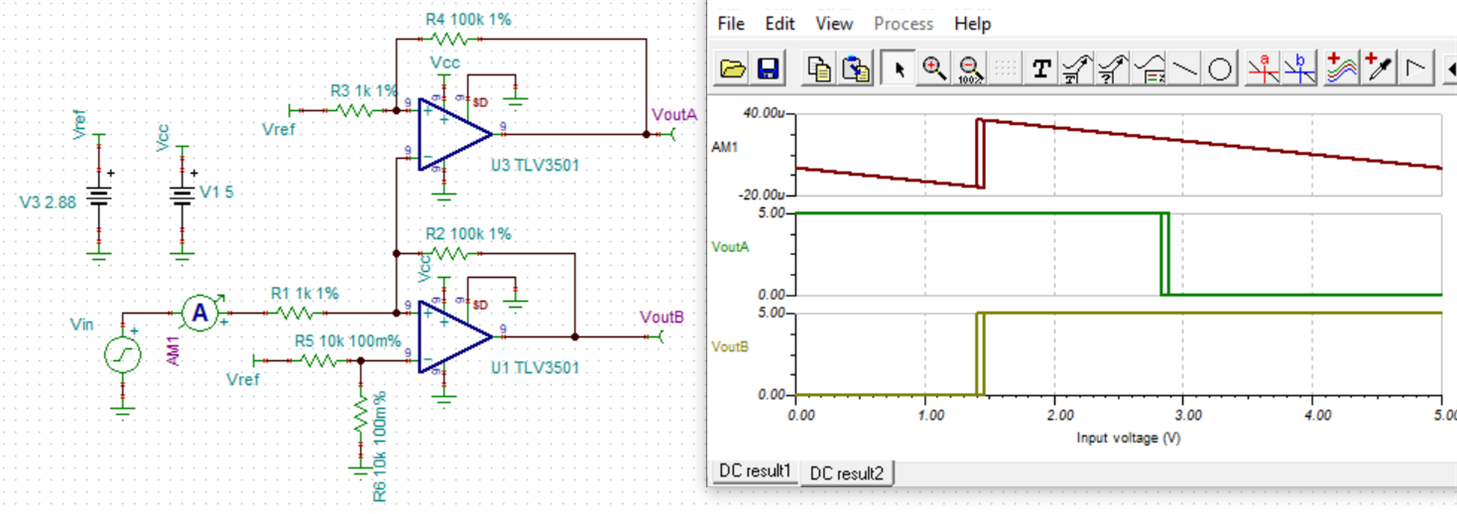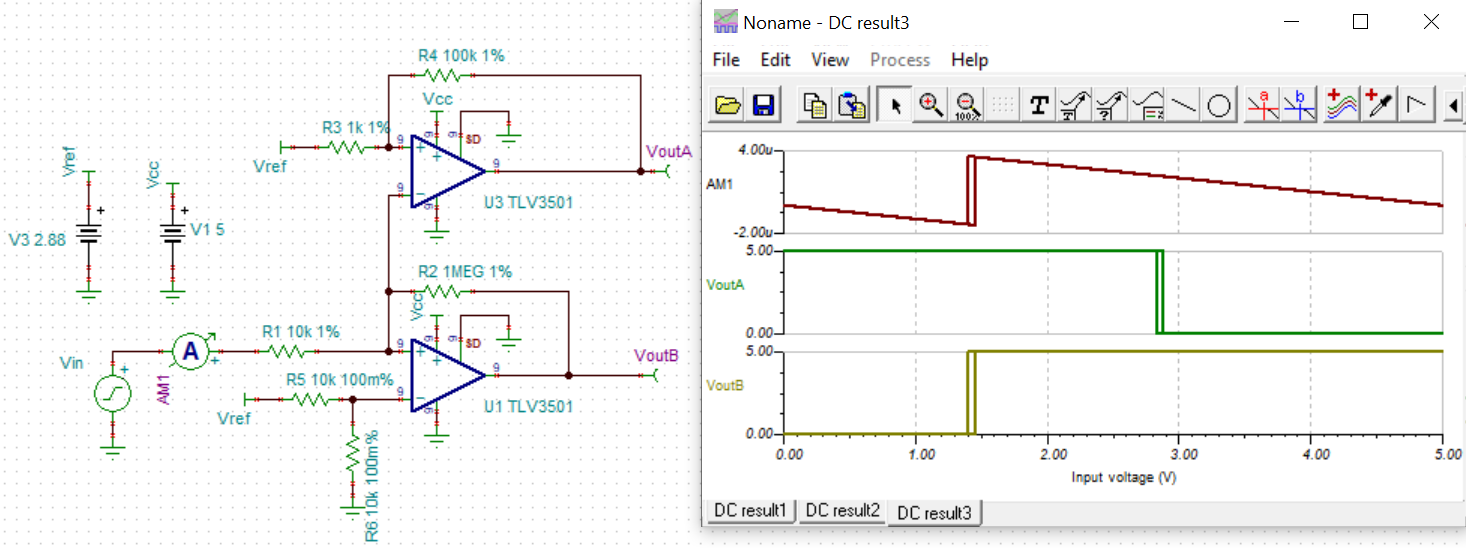Other Parts Discussed in Thread: TLV3502, TL431, OPA2863
Hi,
I am facing a issue, with TLV3502 comparator circuit block. When the high threshold comparator latches the output to 0 logic and high logic I get voltage dips at U31 buffer output as well as the comparator U32 output.
I don't face the same issue during lower comparator latching but the comparator U33 output also has a delay to reach final voltage.
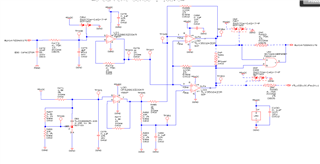
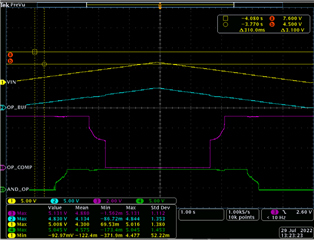
I changed the value of R479 and R485 from 1K to 22K, similarly R488 and R489 from 100K to 316K. The dips went away but my circuit latching threshold changed. I dont know why as my threshold from DB1 TL431 (left down corner) resistors or low threshold resistors were not changed. In simulation everything is working fine.
After changing the resistor values.
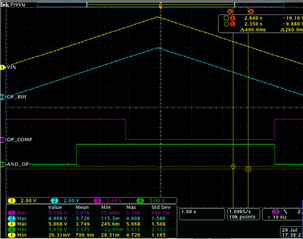
Please help me to resolve the issue.


